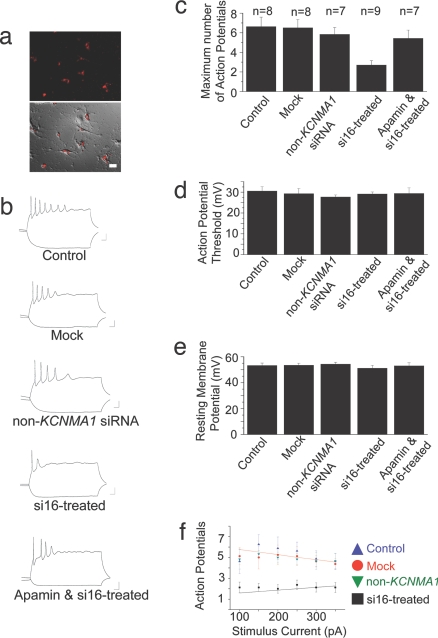Fig. 4.
Firing properties of hippocampal neurons are altered by i16-specific siRNAs. Hippocampal neurons were transfected with pools of siRNAs directed against separate KCNMA1 i16 sequences or a non-KCNMA1 target sequence (Ambion negative control nos. 1 and 7) and 20 nM siRNA-Glo Rhodamine marker. The neurons were current-clamped at −80 mV, and brief current injections (500 ms) were applied to evoke a train of action potential. The input impedance of treated neurons was not significantly different compared with control neurons (control, 0.484 ± 0.09, n = 8; mock-treated, 0.479 ± 0.064, n = 8; non-KCNMA1 siRNA-treated, 0.487 ± 0.080, n = 7; si16-treated, 0.590 ± 0.070, n = 9; apamin and si16-treated, 0.422 ± 0.07, n = 7). (a Upper) A fluorescence image showing the siRNA-Glo Rhodamine signal in the transfected neurons. (Lower) Photomicrograph is a merged image of fluorescence signal over DIC image. (b) Representative action potential traces from −150 and +150 pA current injection. (c) Histogram summary of the maximum number of action potentials generated from one current injection for each condition. (d) Histogram summary of the action potential threshold for each condition. (e) Histogram summary of the resting membrane for each condition. (f) Summary plot of the maximum number of action potentials generated at each current injection from si16-treated and mock neurons. Data are means ± SEM.

